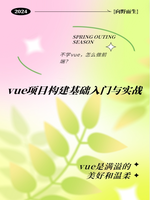Vue 3.0 中引入了 Tree-shaking 特性,可以帮助我们更好地优化应用的性能。具体来说,Tree-shaking 是一种代码优化技术,它可以在打包时自动去除未被使用的代码,减少应用的体积,提高加载速度。
在 Vue 3.0 中,通过将组件划分为独立的模块,每个模块都具有清晰的输入和输出,这使得 Webpack 可以更好地进行 Tree-shaking。在打包时,只会将实际使用到的模块打包到最终的输出文件中。
下面是一个示例,假设我们有一个 hello.js 文件和一个 world.js 文件,hello.js 依赖于 world.js 中的一个函数 foo:
// world.jsexport function foo() {console.log('foo')}// hello.jsimport { foo } from './world'export function hello() {console.log('hello')foo()}
如果我们只使用 hello.js 中的 hello 函数,而没有使用 foo 函数,那么在 Tree-shaking 的过程中,foo 函数将被去除掉,只有 hello 函数被打包到最终的输出文件中。
在 Vue 3.0 中,我们可以通过 import 和 export 语法来将组件划分为独立的模块,从而实现更好的 Tree-shaking 效果。
下面是一个示例,假设我们有一个 Button.vue 组件和一个 Input.vue 组件,Button.vue 依赖于 Input.vue 组件中的一个函数 validate:
// Input.vue<template><input v-model="value" /></template><script>export function validate(value) {return value !== ''}</script>vueCopy code// Button.vue<template><button @click="handleClick">Submit</button></template><script>import { validate } from './Input'export default {methods: {handleClick() {if (validate(this.value)) {// submit form}}}}</script>
在这个示例中,Button.vue 组件使用了 Input.vue 组件中的 validate 函数。在打包时,如果只使用了 Button.vue 组件,那么 Input.vue 组件中的所有未被使用的代码将被去除掉,只有 validate 函数被打包到最终的输出文件中。







